8 Tips for Perfect Tungsten Light Photography
Tungsten light is a type of artificial light that is very popular in photography. It has a yellow-orange color and is often used to create warm and cozy images. Here are eight tips for great tungsten light photography.
[highlight type=”short” price=”no” tag=”epshorthighlight-20″ toc=”no” title=”Hession Edison Light Bulbs (6 Pack)” badge=”Energy-Efficient, Warm-Toned” product=”39721″]Upgrade your tungsten light photography with these bulbs. Their warm glow and long lifespan make them perfect for creating a cozy atmosphere in any space. Expertly crafted for maximum satisfaction.[/highlight]
Tungsten Light Photography: What Is It?
Tungsten light is warm artificial light. It’s usually orange or yellow.
You probably have it at home in your oven, bathroom, and kitchen. It’s also common in lamps, street lights, and theatre stage lights. It exists in many places, yet it’s something photographers overlook very often.
Tungsten light can be problematic if you want to control your light. It might make your photos look uneven or create an unflattering glow. In portrait photography, it can completely change someone’s skin tone.
If you use tungsten light correctly, you’ll be able to enhance your photos with it. Many of these tips feature portrait photos as reference, but you can use them in any photography genre you like.
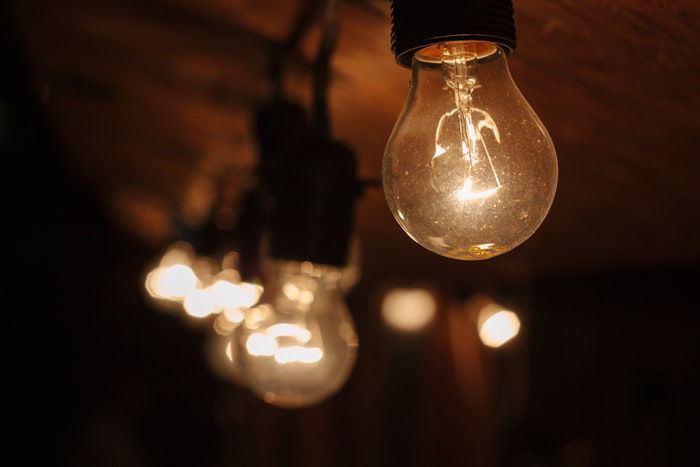
Photo by Vladyslav Dukhin from Pexels
8. Use Tungsten Light as Backlight for Dreamy, Surreal Photos
You can achieve this look with a simple lamp in a dark room. The tungsten light will add warmth to your image and create a beautiful glow.
Make sure you place your light source behind your subject. If you want to create a lens flare, don’t cover the light source completely. Shoot from different angles to find your favourite light effect.
You can also create a silhouette by completely covering the tungsten light. This will create a halo effect around your subject.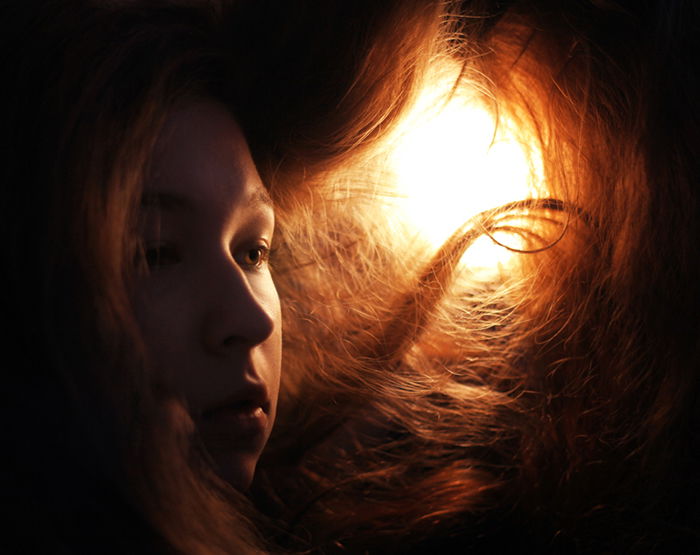
7. Create a Dim Tungsten Light Effect by Shooting Through Something
Some tungsten lights come with controls. Others are fixed, which means you can’t change their intensity. If you find that a certain tungsten light is too bright for your images, you can try these two solutions:
- Decrease your exposure. You can also use a smaller aperture to compensate for all of the extra light.
- Shoot through something that will dim the light. Glass doors, curtains, and even paper can all help you achieve this. Keep in mind that if you use patterned fabric, it will create shadows on your subject.
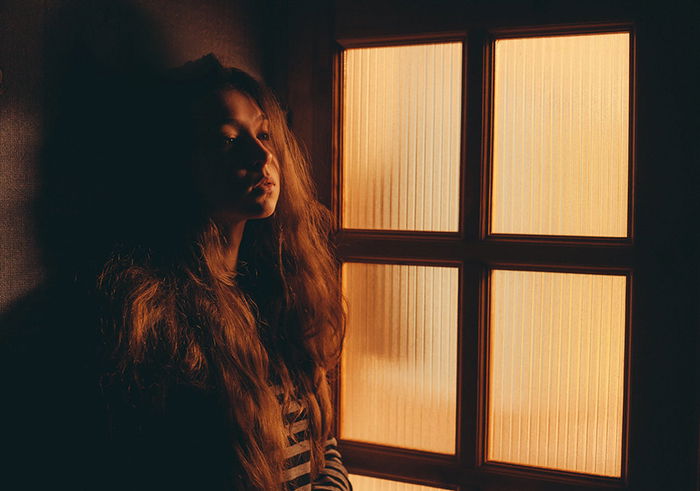
6. Combine Tungsten Light With Evening Light for a Dramatic Effect
Warm and cool colors go very well together in photography.
You can emphasise this contrast by using tungsten light in the evening. The best time of day for this is the blue hour when the light outside is mostly made up of cool tones. Your goal is to use natural and artificial lighting in one composition.
In the photo above, I used bathroom ceiling light and natural evening light. The tungsten light highlights a part of the model’s face. The evening light creates a blue glow that complements the warmth of the tungsten light.
As you can see, there’s a lot you can do with a couple of simple light sources.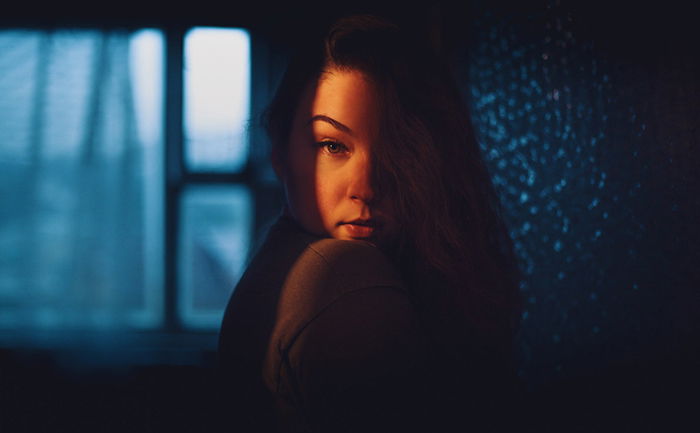
5. Or Combine It With Daylight for a More Natural Look
If you’re not a fan of dramatic contrasts, you can try a subtler version of the previous technique. Take photos next to a window on a sunny or cloudy day. If the light is soft, you’ll be able to emphasise the tungsten light more.
You can use a lamp, ceiling light, or anything else that emits a warm light. You can also take photos in a café as I did. The designs in the café, combined with the two different lights, helped me take a fun and casual portrait.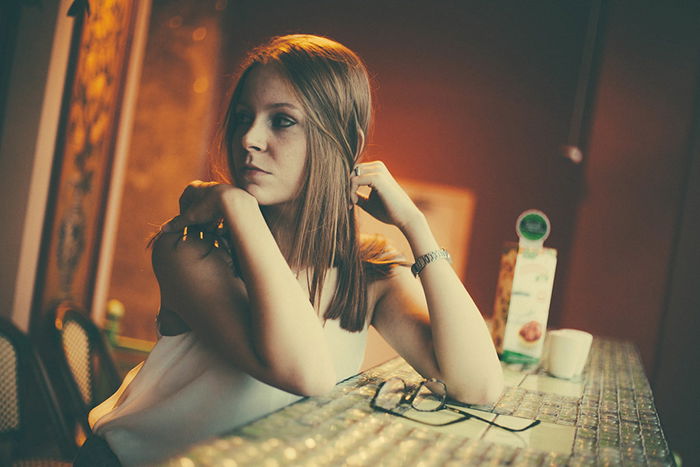
4. Use the Warmth of Tungsten Light to Create Gorgeous Bokeh
If you have a macro lens or a lens with a large aperture, you’re in luck! Tungsten light is the perfect tool for creating beautiful bokeh.
Make sure the tungsten light you’re using is bright. Use the largest aperture possible and focus on your subject. You can create bokeh by placing something behind your subject. This can be drops of water, glitter, or anything that reflects light.
The result should be a golden effect that makes your subject look even more appealing.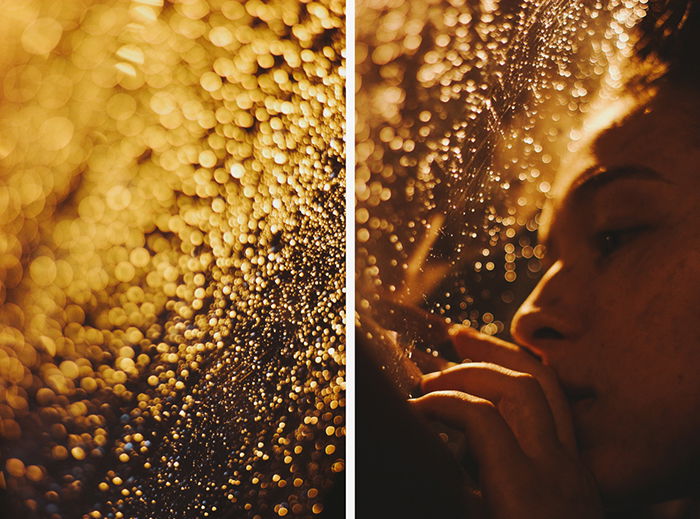
3. Adjust Your White Balance to Avoid Oversaturation
Many photographers avoid tungsten light because it makes oranges, yellows, and reds look unnatural. You can easily fix this by adjusting your white balance. You have to do this manually to ensure that your pictures look great.
The cooler your color temperature, the whiter the tungsten lights will look. You can use this trick to make everything in your images look neutral. This can make it easier for you to edit your pictures later on.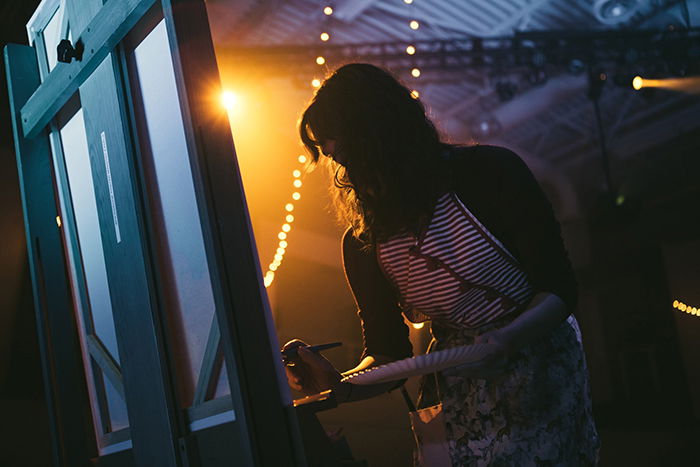
2. Use Indoor Tungsten Lights to Take Dramatic Photos
If you’re taking photos indoors, you can use one source of light to create dramatic photos.
Imagine you’re shooting in a dark room with one source of tungsten light. This can be a lamp, ceiling light, or even oven light. The light will hit only a specific part of your subject. The rest will be covered in shadows.
This dramatic effect is perfect for all kinds of photography genres. It’s particularly useful for portrait and pet photographers who want to add depth to their work.
Side light tends to be the most dramatic, but you can experiment with different angles.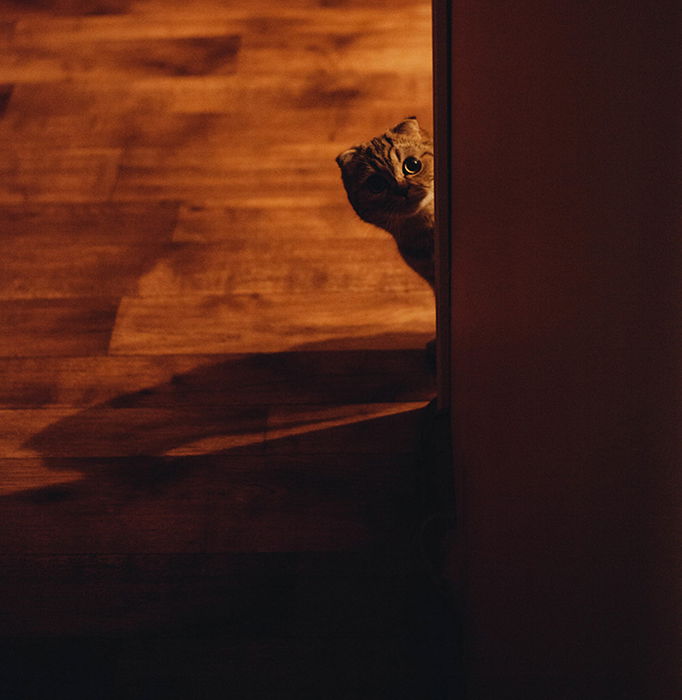
1. Create a Flattering Portrait With a Few Tungsten Lights
If you take photos directly under tungsten light, your photos will look uneven and unflattering. You can avoid this by using several sources of tungsten lights in one picture.
You don’t need special equipment for this. You can use a variety of artificial lights. For example, you can use two lamps to light half of your subject’s face and give them a pleasant glow from behind. There’s really no limit to what you can do with even a couple of tungsten lights!
If there still isn’t enough light, you can use a reflector. This will reflect the available light onto your subject. If you’re taking photos of a person, this reflected light will give their eyes sparkle and get rid of dark circles under their eyes.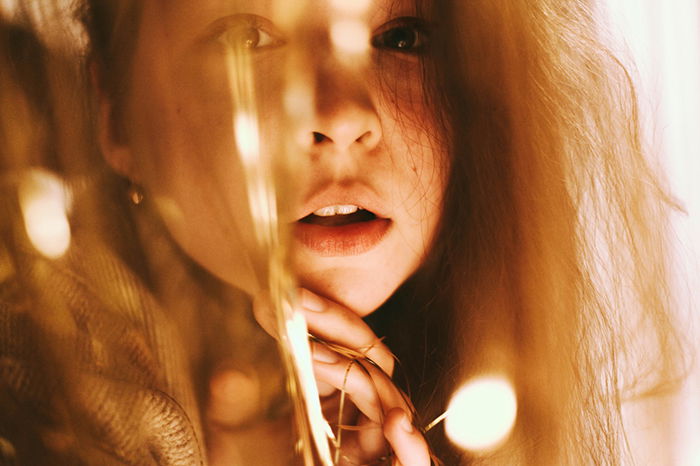
Common Tungsten Light Questions
Which Light Is Best for Photography?
Speedlights are some of the best lights for studio photographers. If you work with natural light, take photos during the golden hour or the blue hour. These times of day are the best for soft and even lighting.
Is LED Light Good for Photography?
Yes. LED lights are ideal for low light photography. You can use them to make any subject stand out in the dark.
Conclusion
Tungsten lights might seem unappealing at first, but it’s actually a useful and accessible photography tool. You can use it to make any subject look more dramatic, emotional, or eye-catching in the dark. You can also use it during the day to add a pop of color to your images.
Don’t be afraid of experimenting with tungsten lights in different ways. With time, tungsten light might turn into something that you use regularly.